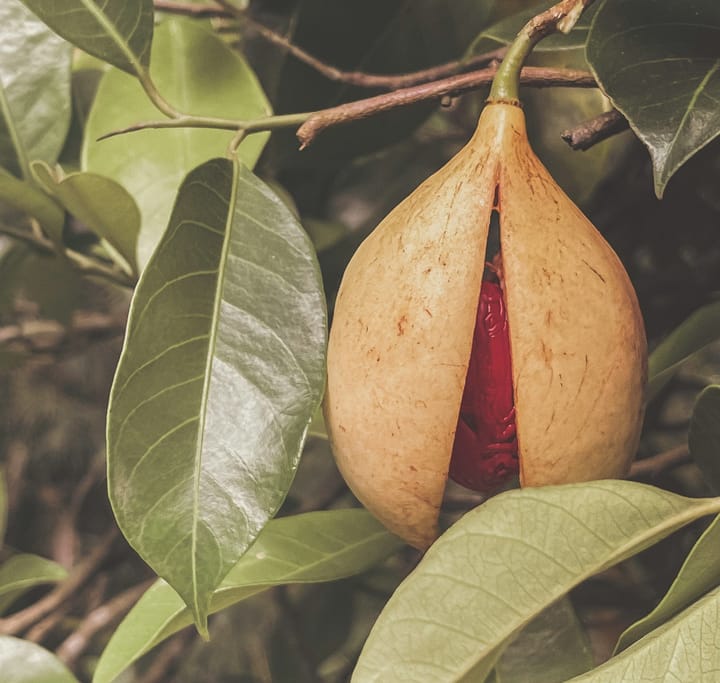Mangalitsa: The Woolly Wonder Premium Hungarian Pork Commanding Global Markets
This sheep-like pig with curly fleece produces extraordinarily marbled meat with a lower melting point than ordinary pork fat. Once nearly extinct, the breed now stars in traditional Hungarian dishes like szalonna, kolbász, and töltött káposzta, commanding premium prices worldwide.
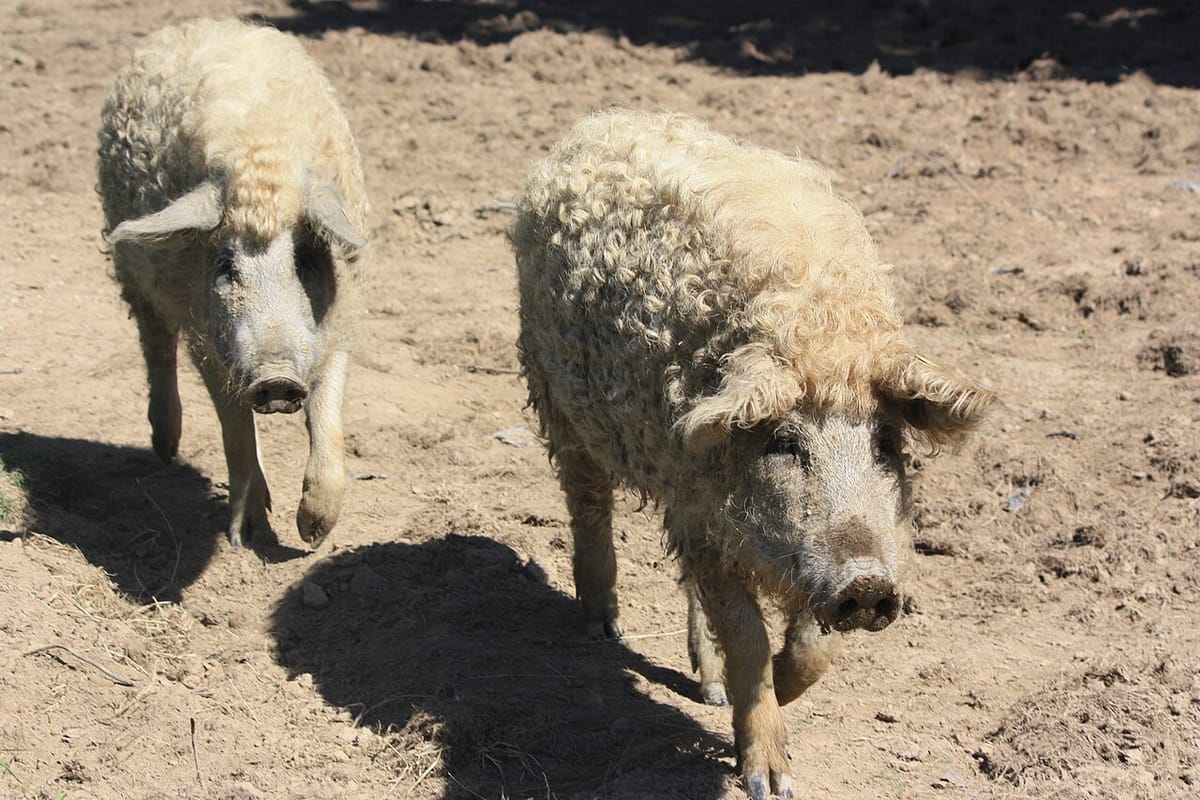
In the picturesque Hungarian countryside, a peculiar pig with a thick, curly coat that more closely resembles sheep's wool than typical pig bristles has become one of the culinary world's most sought-after treasures.
The Mangalitsa (also spelled Mangalica or Mangalitza) isn't just any pig—it's often referred to as the "Kobe beef of pork," commanding prices that can be three to five times higher than conventional pork.
But what exactly makes this Hungarian heritage breed so special, and why are chefs and gourmands around the world willing to pay premium prices for it?
A History of Near-Extinction and Revival
The Mangalitsa's story begins in the 1830s when Archduke Joseph Anton, the Habsburg Palatine of Hungary, received some Šumadija pigs from the Serbian Prince Miloš Obrenović.
These pigs were then crossbred with European and Hungarian breeds like the Bakony and Szalonta to develop the Mangalitsa.
The name itself comes from the Hungarian word "mangalica," meaning "hog with a lot of lard."
For more than a century, the Mangalitsa thrived across Hungary and Central Europe. By the early 20th century, over 30,000 of these wooly pigs were registered in Hungary alone.
However, with the shift toward leaner meats after World War II and the rise of intensive farming, the Mangalitsa nearly disappeared. By the 1990s, fewer than 200 purebred Mangalitsas remained in Hungary.
What followed was one of agricultural history's most remarkable rescue efforts.
Hungarian animal geneticist Peter Toth recognized the breed's unique qualities and spearheaded conservation efforts that have brought the population back to tens of thousands.
Today, this living piece of Hungarian agricultural heritage has found admirers far beyond its homeland.
The Distinctive Qualities of Mangalitsa Pork
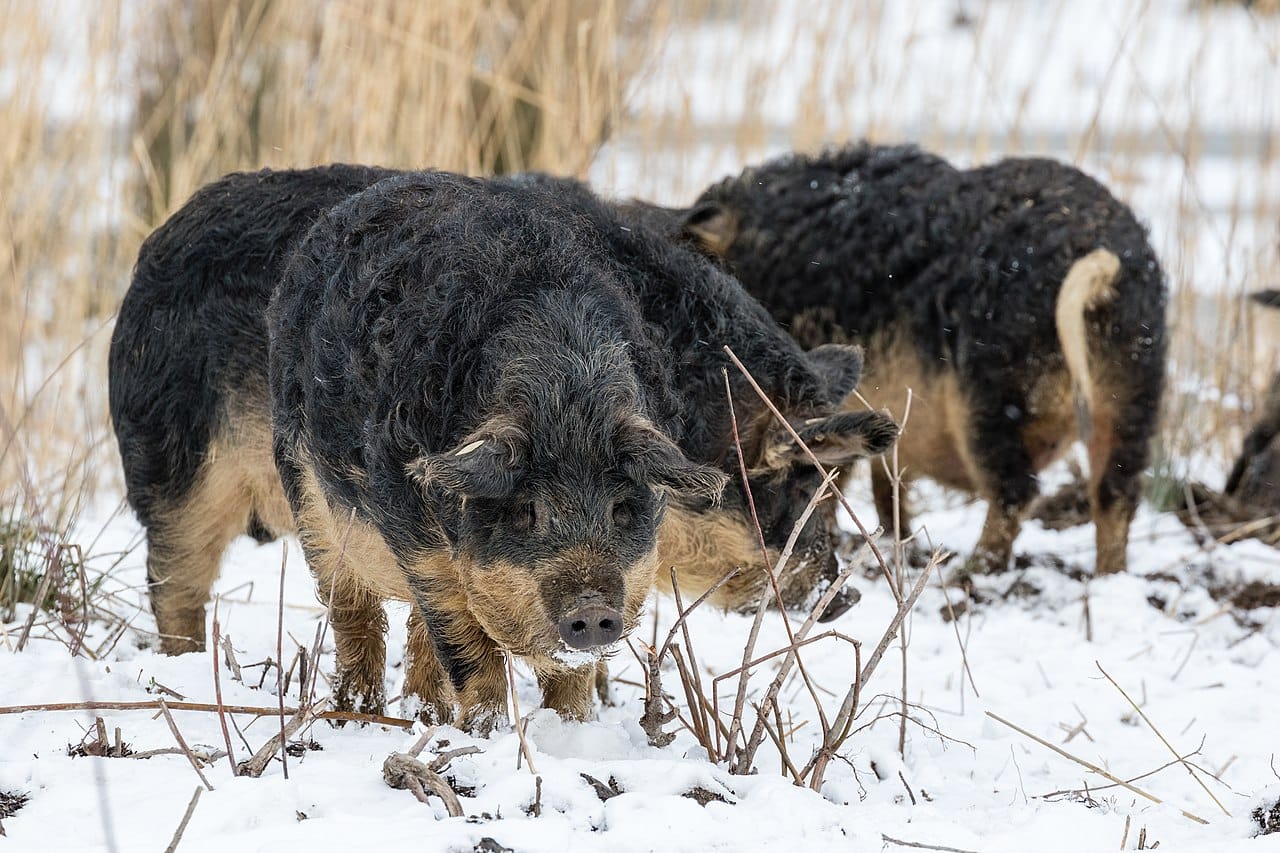
What makes Mangalitsa pork so different begins with the pig itself. Unlike modern commercial breeds that reach market weight in just six months, Mangalitsas grow slowly, typically taking 12-18 months to mature.
They thrive in free-range environments where they can forage for acorns, roots, and natural foods that contribute to their distinctive flavor profile.
The most immediately striking feature is, of course, their wooly coat, which comes in three color varieties: blonde (the most common), swallow-bellied (black with a white underbelly), and red.
This thick coat enables them to withstand harsh winter temperatures in Central Europe without the need for heated barns.
But it's what's under the coat that makes culinary enthusiasts swoon. Mangalitsa pork contains 50% more intramuscular fat than typical commercial pork.
This fat has a lower melting point (around 32°C/90°F) than ordinary pork fat, making it practically melt on the tongue.
The meat also has a higher proportion of oleic acid—the same "good fat" found in olive oil—giving it a distinctly nutty, sweet flavor.
Hungarian Culinary Traditions: Mangalitsa at the Heart of National Cuisine
In Hungary, the Mangalitsa has been integral to traditional cuisine for generations, starring in dishes that showcase both the rich meat and the prized fat.
Hungarian culinary culture places enormous value on pork fat—not just as a cooking medium but as a celebrated ingredient in its own right.
One of the most beloved Mangalitsa preparations is szalonna, a traditional Hungarian fatback that can be eaten raw (as in smoked szalonna), rendered for cooking, or most famously, prepared as töpörtyű (pork cracklings).
During traditional Hungarian gatherings, szalonnasütés—the ritual of roasting fatback over open flames—brings people together as they collect the dripping fat on bread rubbed with garlic.
Kolbász (Hungarian sausage) made from Mangalitsa is particularly prized for its rich flavor and moistness.
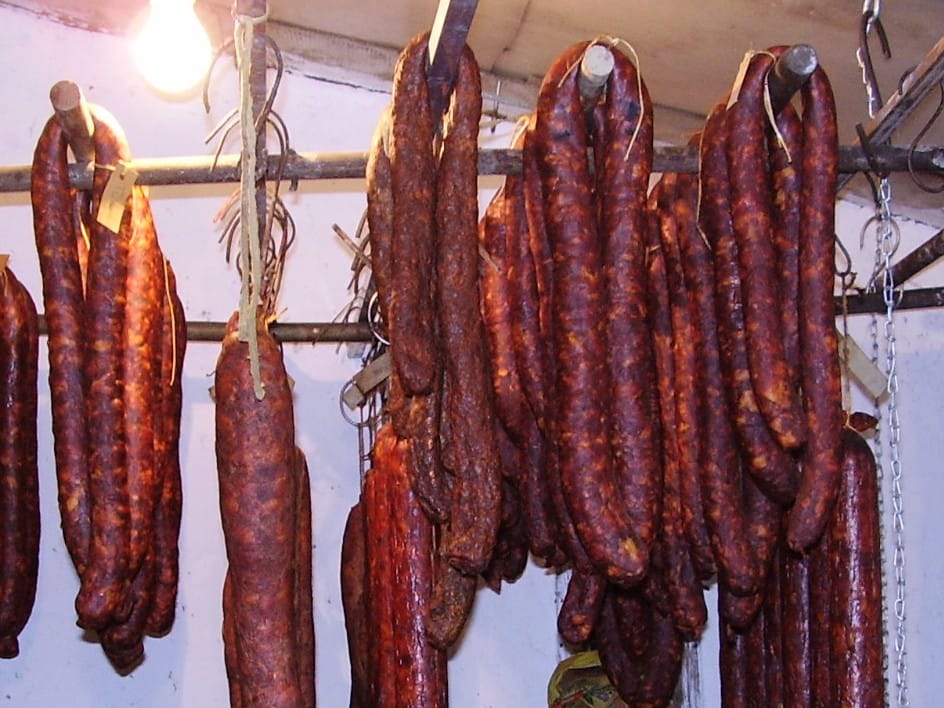
Unlike leaner varieties, Mangalitsa kolbász retains its juiciness even after smoking or drying.
The traditional Hungarian csabai and gyulai sausages reach their pinnacle when crafted from Mangalitsa pork.
The fat is also essential in preparing authentic Hungarian pörkölt (a type of meat stew) and paprikás dishes, where it forms the base of the sofrito-like foundation along with onions and paprika.
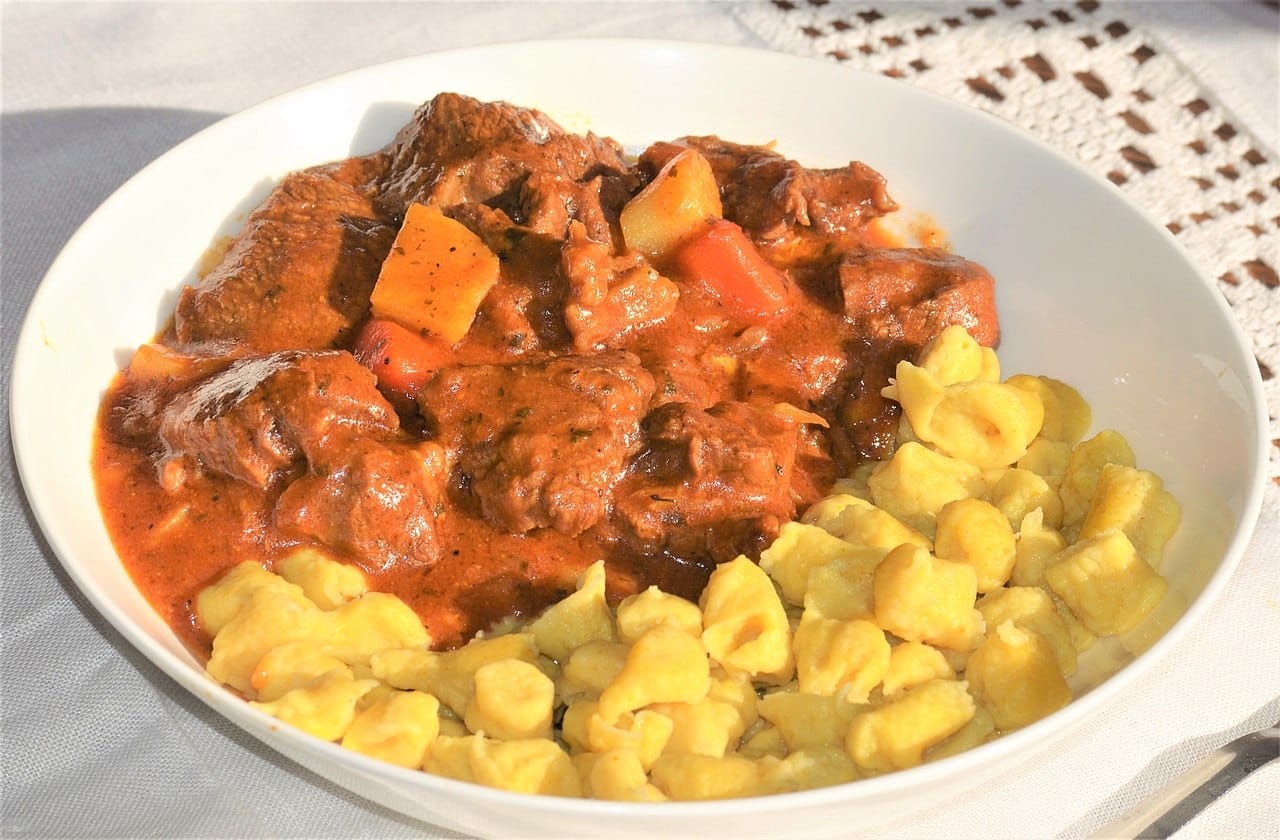
Disznótoros—the traditional Hungarian pig slaughter feast—historically centered around Mangalitsa pigs, with the event turning into a community celebration where every part of the animal would be prepared and enjoyed throughout the winter months.
Even the traditional Hungarian dish töltött káposzta (stuffed cabbage) gains exceptional richness when prepared with Mangalitsa meat, with the abundant fat keeping the cabbage rolls moist and flavorful during the long cooking process.
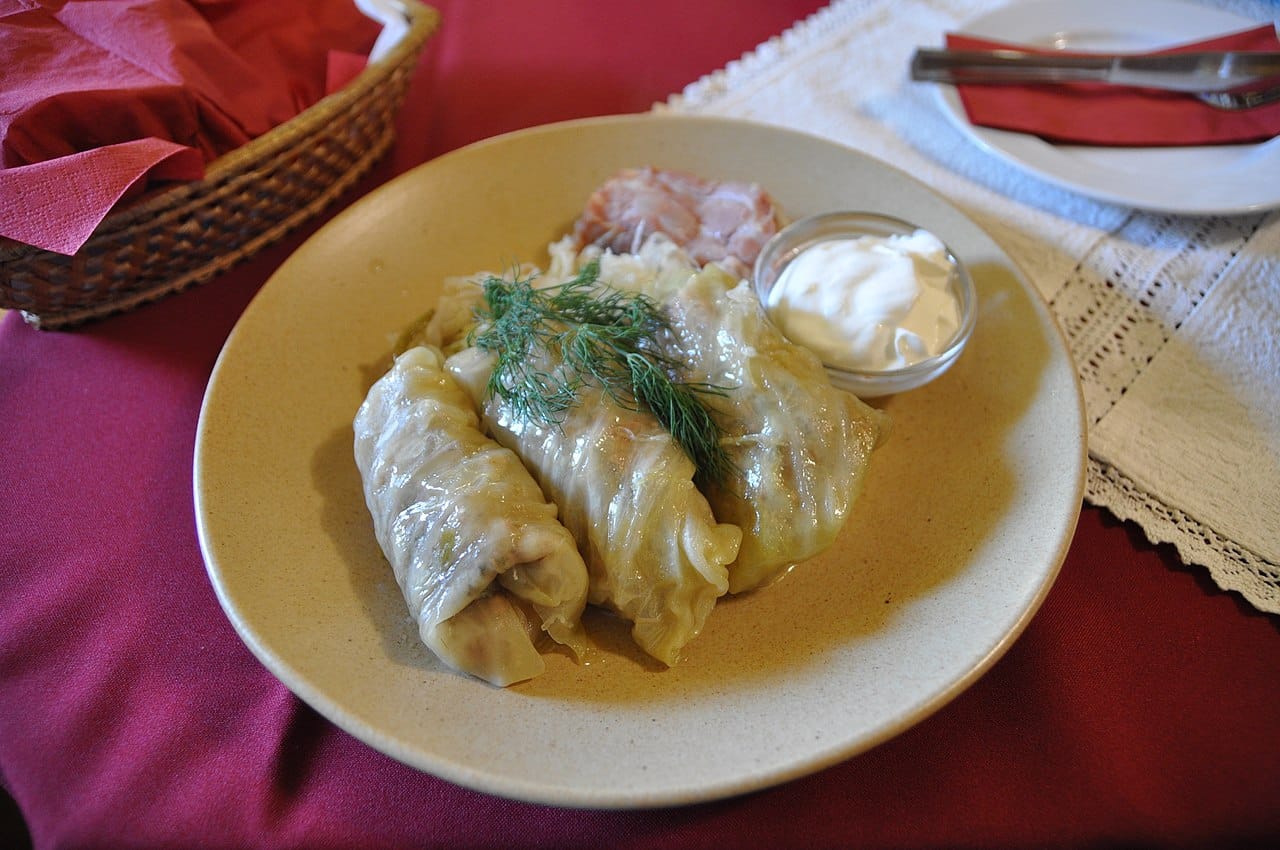
Perhaps most famously, Hungarian mangalica sonka (cured ham) rivals the finest prosciutto or jamón ibérico, with a longer curing process that can extend to 24 months. The exceptional fat quality allows for this extended aging, developing complex flavors impossible to achieve with leaner pork.
Pork Perfection: Mangalitsa's Culinary Magic
The Mangalitsa's fat-to-meat ratio creates a remarkable eating experience.
The abundant marbling means the meat remains juicy even when cooked to higher temperatures.
This quality has made it particularly prized for charcuterie—especially long-cured products like jamón, culatello di zibello, and other specialty hams, where the fat's stability and flavor-carrying capacity shine.
Many who taste Mangalitsa for the first time are struck by its intensity. The pork meat cut has a deeper, richer color than commercial pork, and its flavor is often described as complex, with earthy, nutty, and sweet notes.
Its texture is also more tender and buttery, owing to the fine intramuscular fat distribution.
Internationally, high-end chefs have embraced Mangalitsa for everything from elevated pork chops to refined charcuterie boards.
The breed has found enthusiastic fans among nose-to-tail cooking advocates, as its offal is exceptionally flavorful compared to that of commercial breeds.
The Price Premium: Understanding the Cost Factors
With prices that can reach $25 per pound or more (compared to $4-6 for conventional pork), what exactly drives the Mangalitsa's premium status?
First, there's the production timeline. While commercial pigs reach slaughter weight in 6 months, Mangalitsas take at least twice as long. During this extended period, they require more feed, more space, and more labor—all of which translate to higher production costs.
Second, Mangalitsas produce smaller litters than commercial breeds—typically 5-6 piglets versus 10-12 from industrial breeds. This lower reproductive efficiency means fewer animals from each breeding cycle.
Third, the breed requires specialized husbandry knowledge. Mangalitsas thrive in traditional, free-range environments but don't adapt well to intensive farming methods. The space and expertise needed to raise them properly add to the price.
Finally, there's the simple matter of supply and demand. Despite conservation efforts, Mangalitsas remain relatively rare. With growing demand from high-end restaurants and discerning consumers, prices have naturally climbed.
Cultural Significance and Preservation
The Mangalitsa represents something more than just exceptional meat. As a heritage breed, it serves as a living link to agricultural practices that prevailed before industrialized farming.
Its preservation helps maintain genetic diversity in the global swine population—diversity that could prove crucial in addressing future challenges like climate change or disease resistance.
Moreover, the economics of Mangalitsa production often support smaller-scale, family-run farms rather than industrial operations.
Many Mangalitsa farmers embrace sustainable practices, creating agricultural systems that work in harmony with natural environments.
In Hungary, the breed has become a symbol of national pride and culinary heritage.
The government has recognized its cultural importance by including Mangalitsa products in the Hungarikum collection—a repository of uniquely Hungarian values worthy of special protection.
A Culinary Treasure Worth Preserving
From near extinction to international culinary stardom, the Mangalitsa's journey reflects changing attitudes toward food production and consumption.
As consumers increasingly seek out foods with authentic stories, distinctive flavors, and ethical production methods, the wooly pig from Hungary has found its place in the spotlight.
Whether encountered as a perfectly seared chop in a fine dining establishment, as part of a carefully curated charcuterie board, or as the centerpiece of traditional Hungarian dishes like töltött káposzta or pörkölt, the Mangalitsa offers more than just sustenance—it provides a taste of history, culture, and artisanal excellence.
For those willing to pay the premium, Mangalitsa pork offers not just a meal, but an experience—a connection to agricultural traditions that have nearly been lost and a reminder that sometimes, the finest things are worth waiting for.
